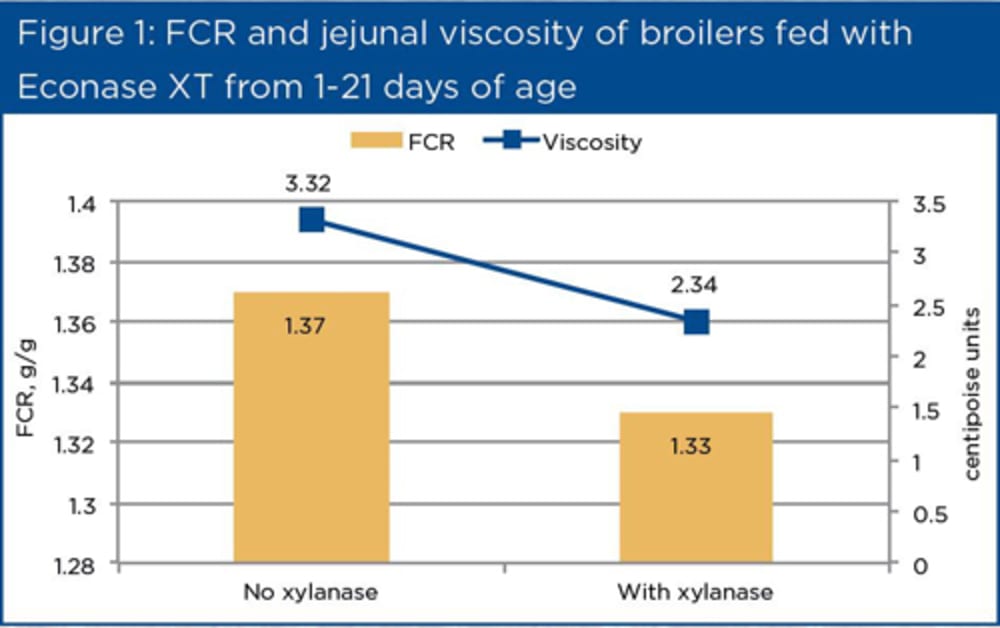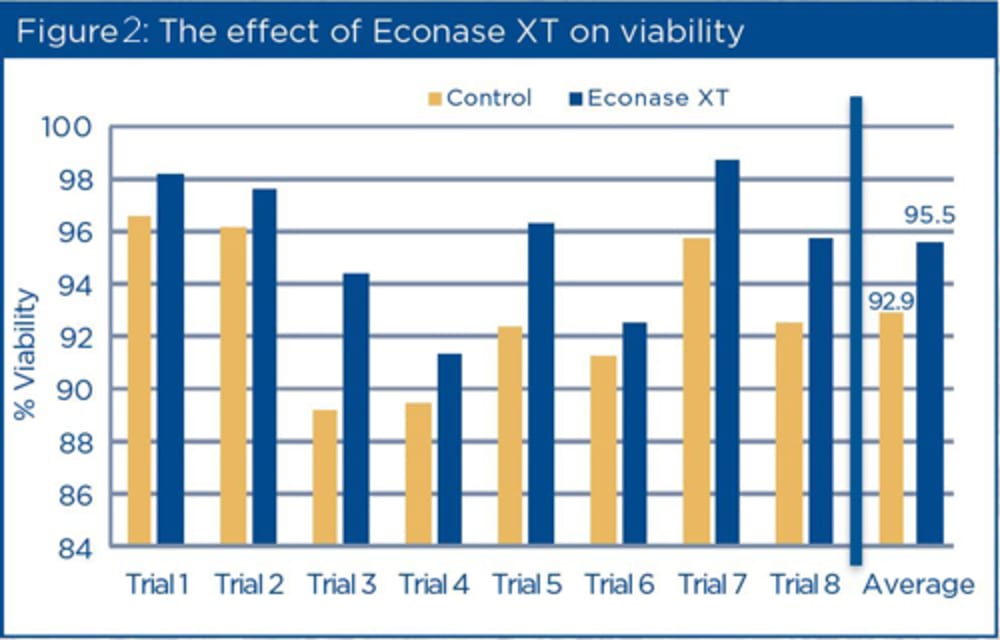Xylanases: saving costs and improving productivity by maximising feed efficiency
Published Friday, 14th April 2017
Faced with pressure to reduce production costs, as well as environmental and legislative constraints, there is emphasis on swine and poultry producers to increase dietary energy utilisation and optimise feed efficiency.
In a bid to maintain profit levels against this challenging backdrop, many nutritionists are revisiting the value offered by non-starch polysaccharides (NSP)-degrading enzymes.
Improving energy release
NSPs present in cereal grains can limit access to starch and protein, and increase gut viscosity, reducing nutrient digestibility. Xylanases such as Econase XT can deliver substantial improvements on nutrient uptake, thereby lowering production costs by reducing gut viscosity and increasing the access of digestive enzymes to the contents of plant cell walls in the diet.
When considering xylanases, it is imperative to select one capable of maximising the breakdown of arabinoxylans – the most prevalent NSP in both poultry and swine diets.
Improving feed efficiency
Research has highlighted an additional mechanism by which NSP degradation by xylanases such as Econase XT can improve overall feed efficiency, in both swine and poultry. It appears that when the long-chain arabinoxylan molecules are broken down by a suitably-targeted xylanase, the resulting short-chain compounds (xylo-oligomers) act as prebiotics, which have an indirect effect on improving the functioning of the large intestine and overall feed efficiency.
These xylo-oligomers act as a nutrient source, boosting beneficial microbes in the lower and hind gut at the expense of potentially pathogenic microbes – leading to a positive shift in the makeup of the microbiome. This greater level of beneficial microbial activity and growth in turn boosts production of volatile fatty acids, which can then be absorbed and utilised by the animal as an energy source.
Against the market trend of reducing antibiotics in animal feeds, this mechanism makes xylanases an attractive choice for nutritionists and producers across the swine and poultry industries.
Proven research results in poultry
The indirect prebiotic effect of Econase XT does not only increase the metabolisable energy but also significantly improves feed conversation ratio in poultry, regardless of whether diets are based on viscous or non-viscous grains. Further benefits include increased boiler uniformity and a reduction in litter moisture content of up to 15 per cent.
The trial results in Figure 1 show the impact of Econase XT on feed conversion ratio (FCR) and gut content (jejunal) viscosity in 0-21 day old broilers. The substantial 30% reduction in viscosity is accompanied by a significant four-point improvement in FCR (1.33 vs. 1.37).
Prove research results in swine
The indirect prebiotic effect of Econase XT has also been linked with improvements in feed conversion ratio (FCR), average daily gain (ADG) and viability in swine. Recent research in pigs demonstrated that the addition of Econase XT resulted in a 66g/day increase in ADG, with a four-point improvement in FCR. In five finisher trials, supplementing pig diets with Econase XT increased body weight gain by 1.8kg on average, with a six-point improvement in bodyweight-corrected FCR, calculated to be worth US$2.10/pig in feed cost savings.
Trials have also shown significant improvements in pig finisher viability, as illustrated in Figure 2. Data from eight trials showed an average 2.6% increase in viability when Econase XT is utilised.
In order to achieve such results across both swine and poultry however, it is critical that the xylanase selected has been developed to be effective within the commercial environment and across a wide range of feed ingredients. Equally it is important that the xylanase can withstand the temperatures of the pelleting process, so that it remains active and present in the feed.
As the only xylanase currently on the market that is intrinsically thermostable up to 95⁰C, Econase XT ensures optimal NSP breakdown, releasing as much energy as possible to deliver improved FCR and cost reduction.
Latest news
Stay ahead with the latest news, ideas and events.

Online Feed Fibre Calculator
Calculate the percentage of dietary fibre in your feed
Our calculator is designed for nutritionists and uses averages of global raw materials to calculate the dietary fibre content (plus other more in-depth fibre parameters) of finished animal feed. These parameters are available within AB Vista’s Dietary Fibre analysis service (part of our NIR service).
Sign up for AB Vista news
A regular summary of our key stories sent straight to your inbox.
SUBSCRIBE© AB Vista. All rights reserved 2025
Website T&Cs Privacy & Cookie Policy Terms & Conditions of Sale University IDC policy Speak Up Policy


























